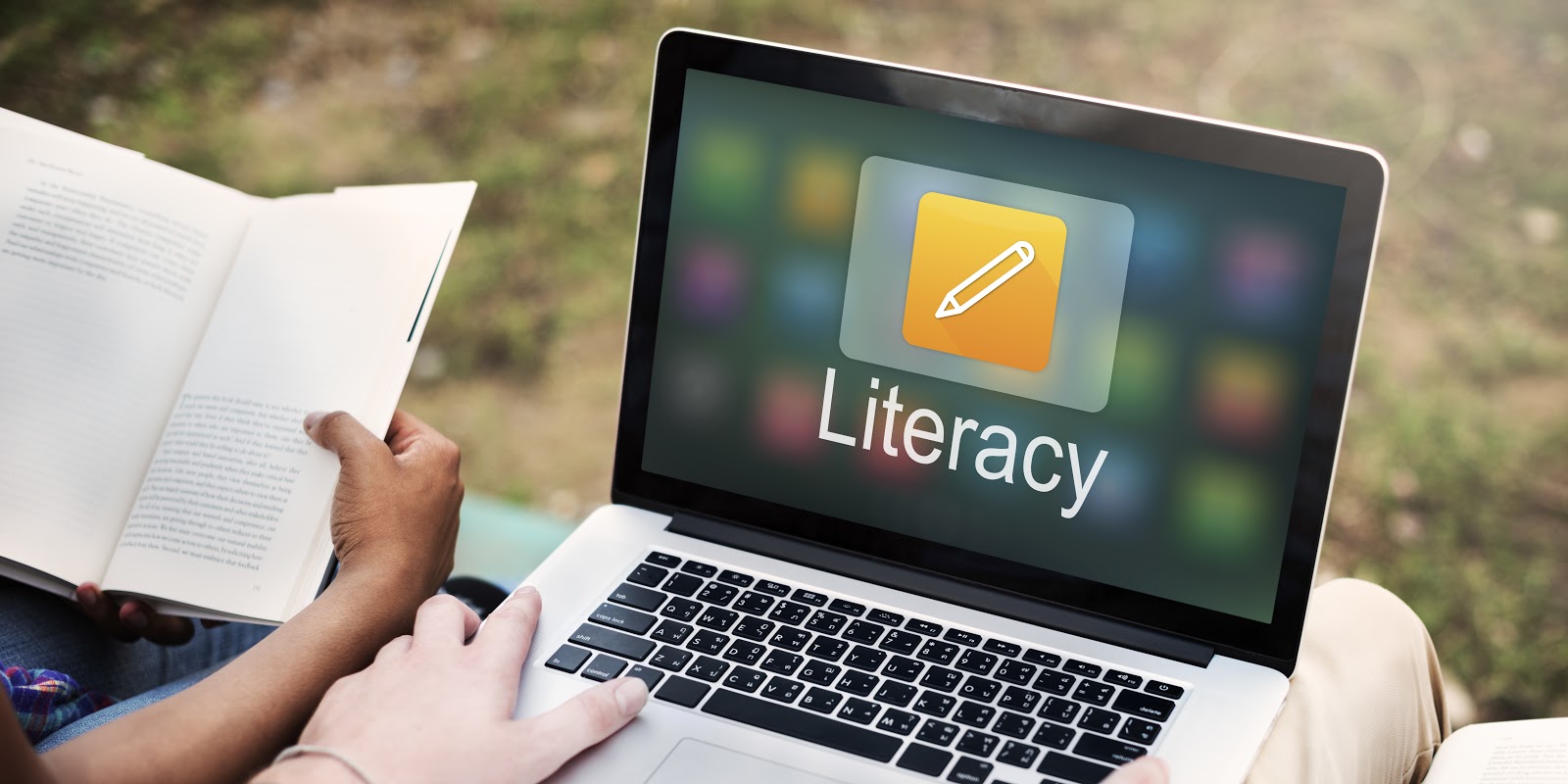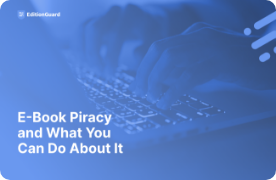 With electronic book sales steadily increasing in the United States, there’s little doubt that people enjoy the freedom of reading digitally. E-books can be purchased anytime and anywhere (say, while lounging in bed) plus they can be synced and accessed across multiple devices. Convenience isn’t the only reason to reach for an e-book, though: this method of reading also promotes digital literacy. Let’s talk about what that means...
With electronic book sales steadily increasing in the United States, there’s little doubt that people enjoy the freedom of reading digitally. E-books can be purchased anytime and anywhere (say, while lounging in bed) plus they can be synced and accessed across multiple devices. Convenience isn’t the only reason to reach for an e-book, though: this method of reading also promotes digital literacy. Let’s talk about what that means...
(Source: Adobe)
What Is Digital Literacy?
The term “literacy” primarily refers to having the ability to read and write. An illiterate person—that is, one who can’t read or write—has difficulty functioning in the world. Reading and writing are essential skills. They allow a person to stay updated on current events with the local newspaper, read signs to help them navigate their community, and compete in academics and the workplace. Literacy is vital to success in today’s society. When “digital” is attached, the meaning of the term broadens. Cornell University defines digital literacy as “the ability to find, evaluate, utilize, share, and create content using information technologies and the Internet.” Through this definition, we learn that “digital literacy” is quite comprehensive. Digital literacy goes far beyond knowing how to read or write. A person who is digitally literate has the capacity to seek out information through digital technologies, assess the quality of the information, and use it accordingly. Plus, it refers to the knowledge and abilities to use a variety of devices, including tablets, smartphones, laptops, desktops, and other forms of technology. Digital literacy skills are crucial in these times, as the use of print media decreases and digital media becomes more and more commonplace. Now that technology is a staple in everyday life, it’s apparent that lacking digital literacy skills places a person at a similar disadvantage to one who doesn’t know how to read or write at all. Digital literacy may encompass the following activities:- Conducting a Google search and evaluating the resulting sources and data
- Reading and navigating through a book using a tablet or e-reader
- Recording and uploading a podcast
- Using appropriate etiquette on a social media forum
- Deciding whether to post or share sensitive images or text
(Adobe: Stock)
What are the Typical Ways to Encourage Digital Literacy?
Digital technology is in nearly every American home today. Data from the Pew Research Center reveals that 84 percent of U.S. households have at least one smartphone, 80 percent have at least one desktop or laptop computer, and 68 percent have at least one tablet. In fact, many American children know how to use touch-screen devices before they can tie their shoes or read a print book. This information highlights the fact that most American children grow up with access to digital technology. Therefore, digital literacy often begins in the home, and children’s training is then continued in the classroom. Here are some of the ways parents usually promote digital literacy:- Helping kids learn how to operate smartphones, tablets, etc.
- Discussing news reports, social media posts, and viral videos as a family
- Utilizing websites and applications that support a child’s reading and writing skill development
- Encouraging critical reading skills during leisure and school-related reading
- Asking questions about online findings
- Examining the quality of a source, an image, or other forms of online media used for homework
- Setting parameters on the use of technology according to a child’s age
- Having preliminary discussions about privacy and sharing online
- Bonding together as a family by using digital devices
- Modeling appropriate screen usage
(Source: Adobe)
How E-Books Can Help
While any sort of reading is highly encouraged by both parents and educators, the use of electronic books provides a clear edge when it comes to the development of digital literacy skills.Accessible and Affordable
Since most adolescents already spend a great deal of their time online, electronic books do a terrific job of meeting readers’ unique needs and preferences. If a child has access to a tablet or e-reader, millions of books (including textbooks and supplementary materials) are readily available to them. E-books are also incredibly mobile and space-saving, as taking one’s summer reading list on vacation requires access to only one device as opposed to a hefty armload. What’s more, print books are considerably more expensive than their electronic versions.Rich Multimedia Features
E-books are equipped with a wide range of features, which are nonexistent in traditional books. Readers can engage with the text through audio narration, animations, dictionary and search features, links to supplementary materials and videos, social sharing capabilities, and highlighting and note-taking capabilities. Such features have been shown to contribute to better reading comprehension among e-book readers. This abundance of components not only promotes general literacy but also provides e-book readers with highly useful digital skills. Overall, when books are online and easily accessible, readers are more likely to engage and enjoy the reading experience.(Source: Adobe)
3 Ways to Encourage Digital Literacy in the Classroom
Educators can help their students use technology effectively in and out of the classroom. They can also prepare them for college and careers in this increasingly digital world. The best way to do this is by starting with a clear set of standards and expectations. Be thorough and firm on the limits within your classroom to ensure your students understand the gravity of tech use. Here are 3 more ways to support the development of your student’s digital literacy skills:1. Boost Critical Thinking
Critical thinking is perhaps one of the most desired outcomes in the educational context. Teachers want to feel confident that their students can examine all aspects of a problem, sort through the available options, and determine the best response or course of action. This sort of thinking is invaluable in school, the workplace, and life in general. Digital literacy requires that a person is informed, sensible, and open-minded when interacting through online media. In the classroom, teachers can help students develop critical thinking skills using technology. For example, a simple way to implement this may include reading a portion of text from an e-reader and making inferences about it. Other approaches may include:- Searching for trusted, quality sources to complete a report or project
- Assigning students to small groups and having a discussion of issues raised in the text or in a web video
- Using peer-review applications to help students offer thoughtful feedback on one another’s work






